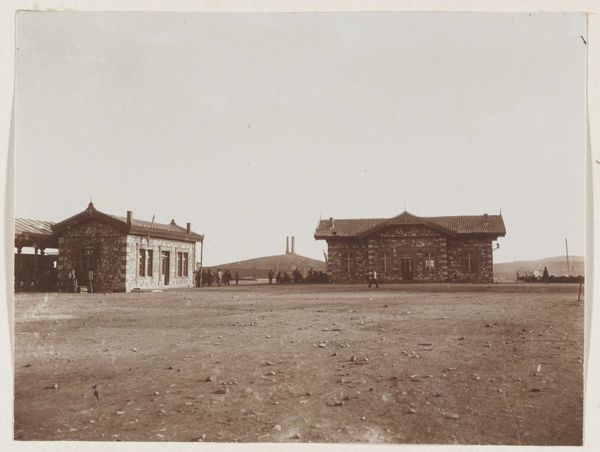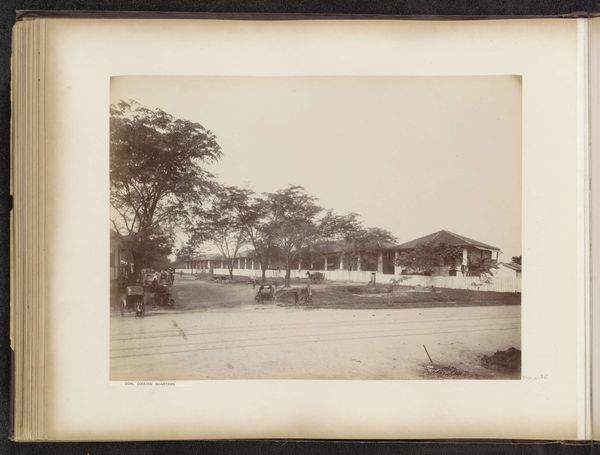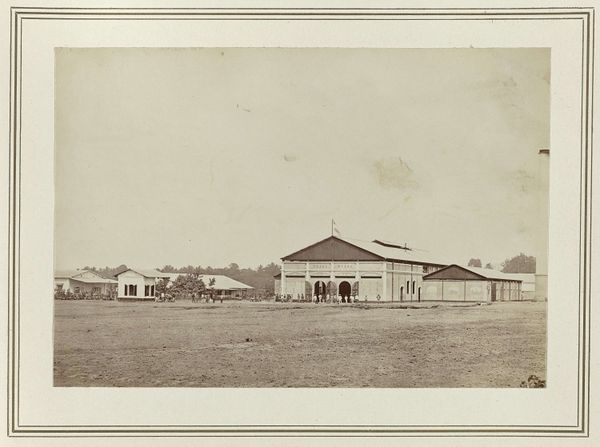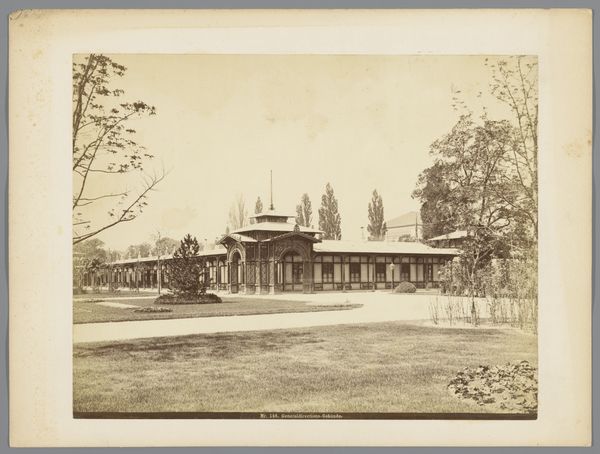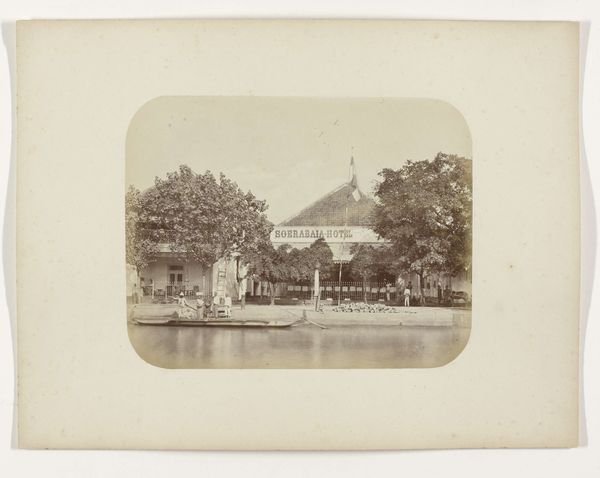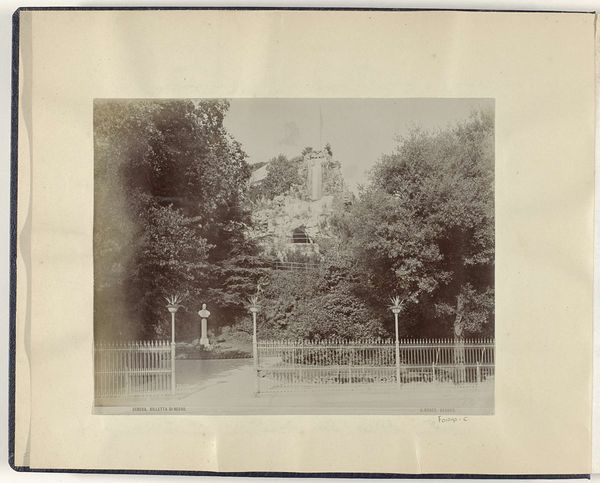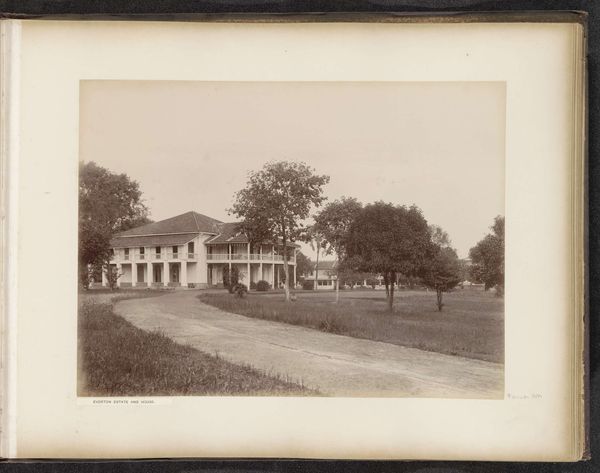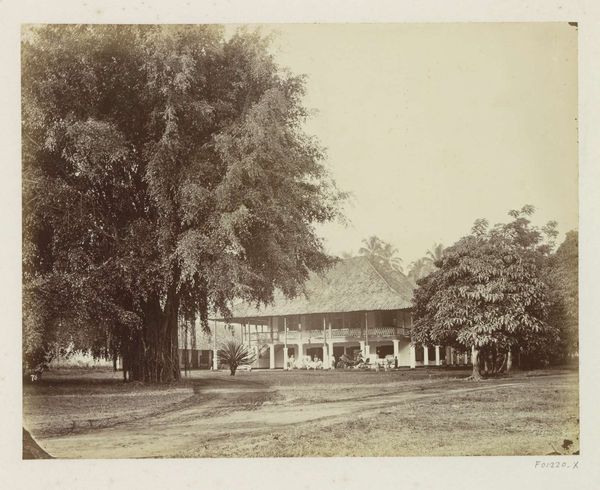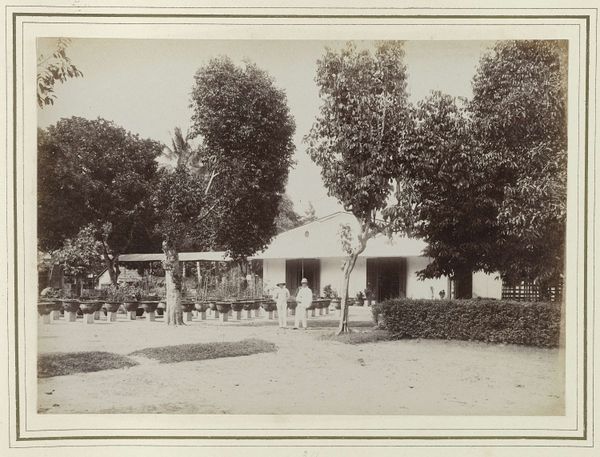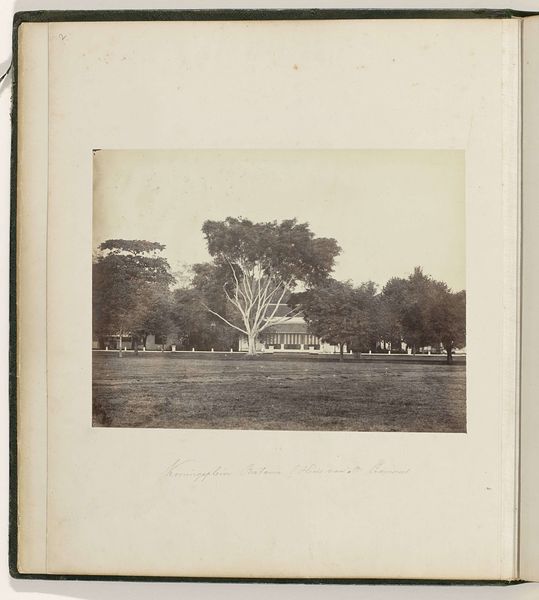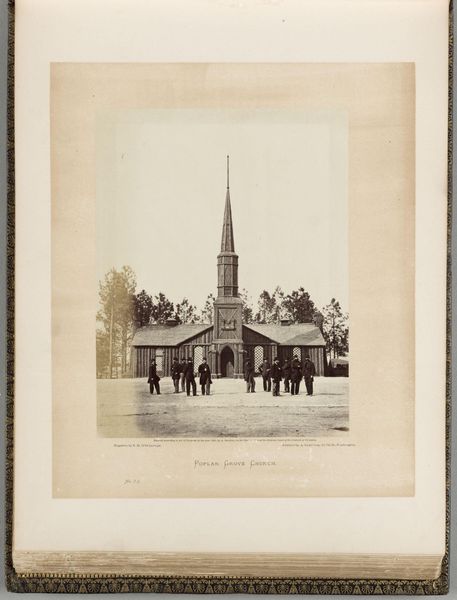
photography
#
landscape
#
photography
#
orientalism
#
islamic-art
Dimensions: height 215 mm, width 275 mm, height 303 mm, width 374 mm
Copyright: Rijks Museum: Open Domain
Curator: This is a photograph titled "Missigit op de Aloen aloen. Soerabaija," created between 1880 and 1888 by Herman Salzwedel, currently held in the Rijksmuseum. It presents a view of a mosque in Surabaya. Editor: There’s a somber elegance to it. The almost monochromatic tones lend a timeless quality, and the clear architectural shapes provide structure amidst the softening effect of the aging photographic process. It feels very staged. Curator: The composition is carefully arranged, wouldn’t you say? Note how the placement of the mosque, framed by the tall trees and juxtaposed with the minaret on the right, creates a balanced but also directional gaze. The interplay of horizontal and vertical elements dictates the image's internal rhythm, reinforcing its structured aesthetic. Editor: Agreed, but let's consider the physical act of creating this image. Think about the equipment involved, the painstaking development processes in the darkroom, the labour required to transport these cumbersome technologies and to prep the location and subjects. This wasn't simply a snapshot but a deliberate construction born from technological and material constraints, revealing the tangible labor behind colonial image-making. Curator: That production aspect is indeed relevant, yet, from a semiotic point of view, we could argue that the image invites us to consider how architecture can become symbolic, acting as an ideological statement that signifies not just a place of worship but a representation of cultural values, captured, consumed, and represented through the photographer’s colonial lens. Editor: Precisely. It's that "lens," both literally and figuratively, that frames our understanding. We must address how Salzwedel's own situatedness, biases, and the mechanics of image-making inevitably colored his vision, shaping how he chose to capture and depict the local Surabaya mosque. Curator: Ultimately, examining how architectural form and photograph composition can evoke historical narratives enhances our reading of its cultural resonance. Editor: And interrogating the process and means of production makes tangible how history becomes recorded, circulated, and perceived.
Comments
No comments
Be the first to comment and join the conversation on the ultimate creative platform.
